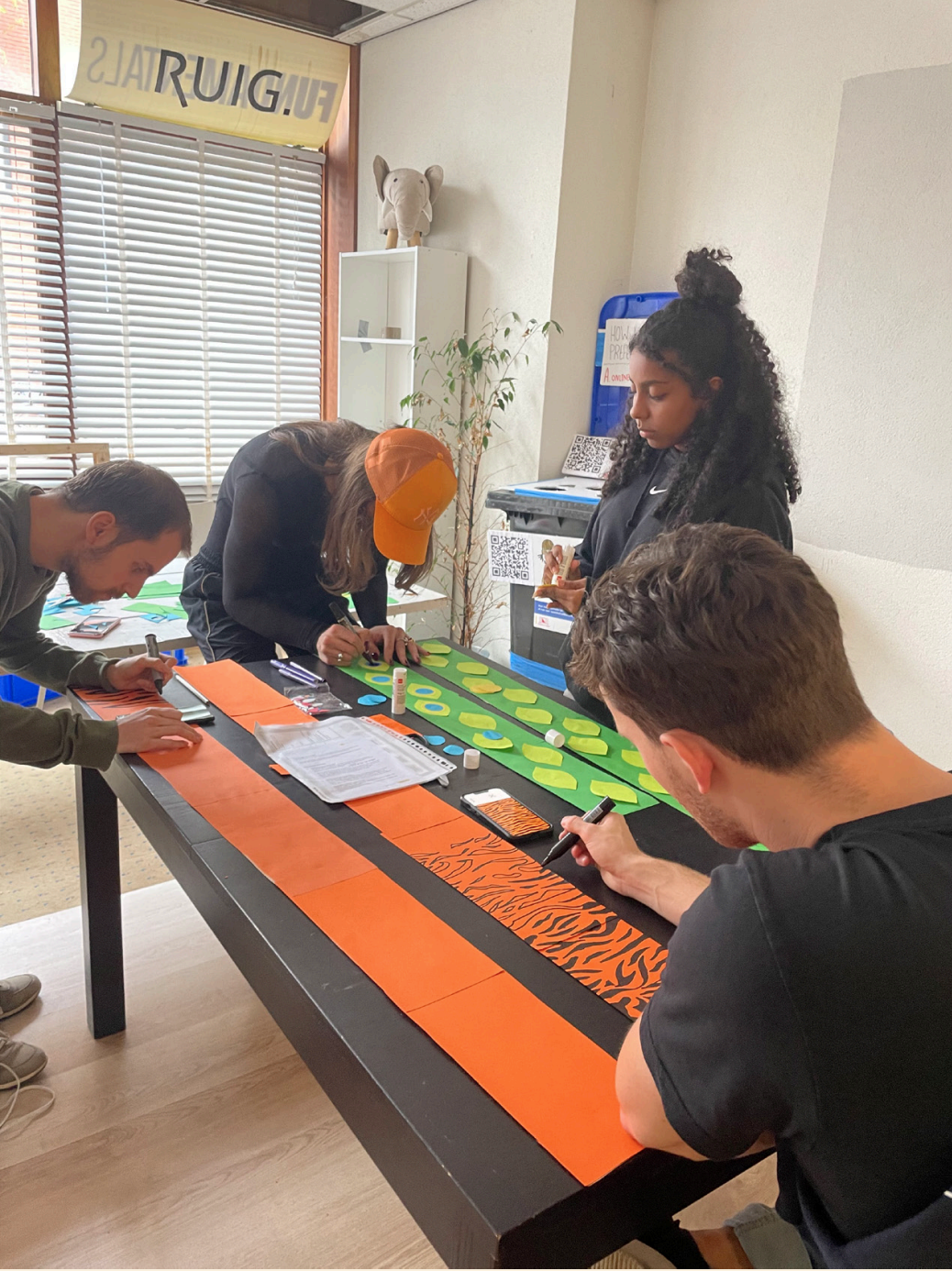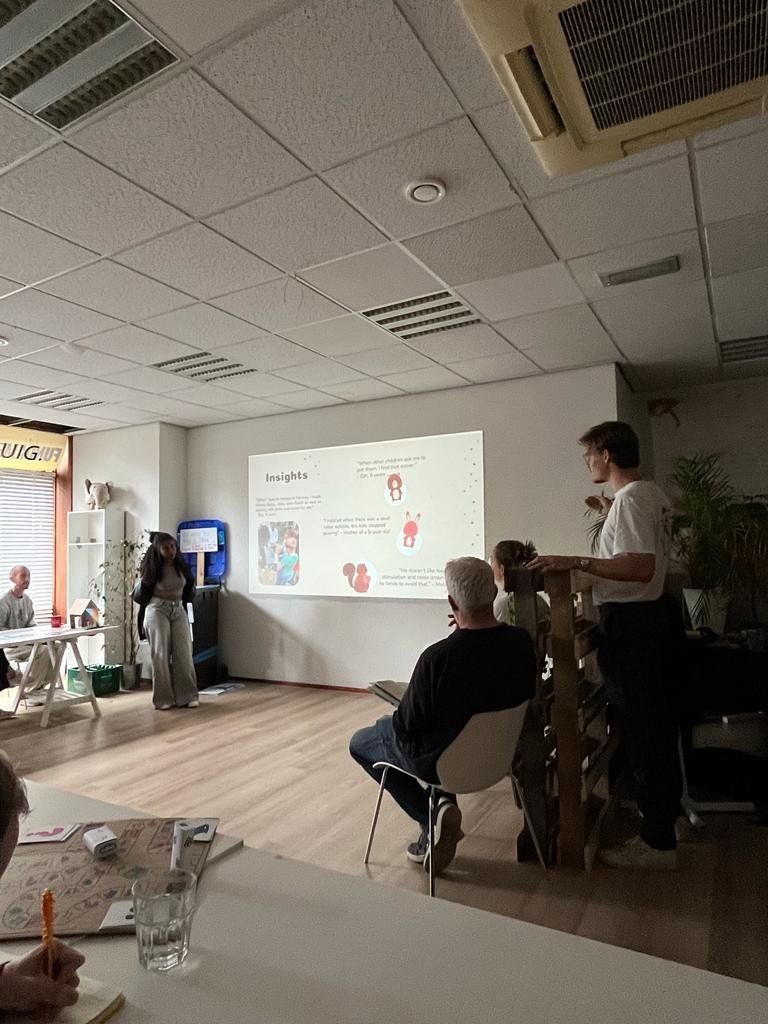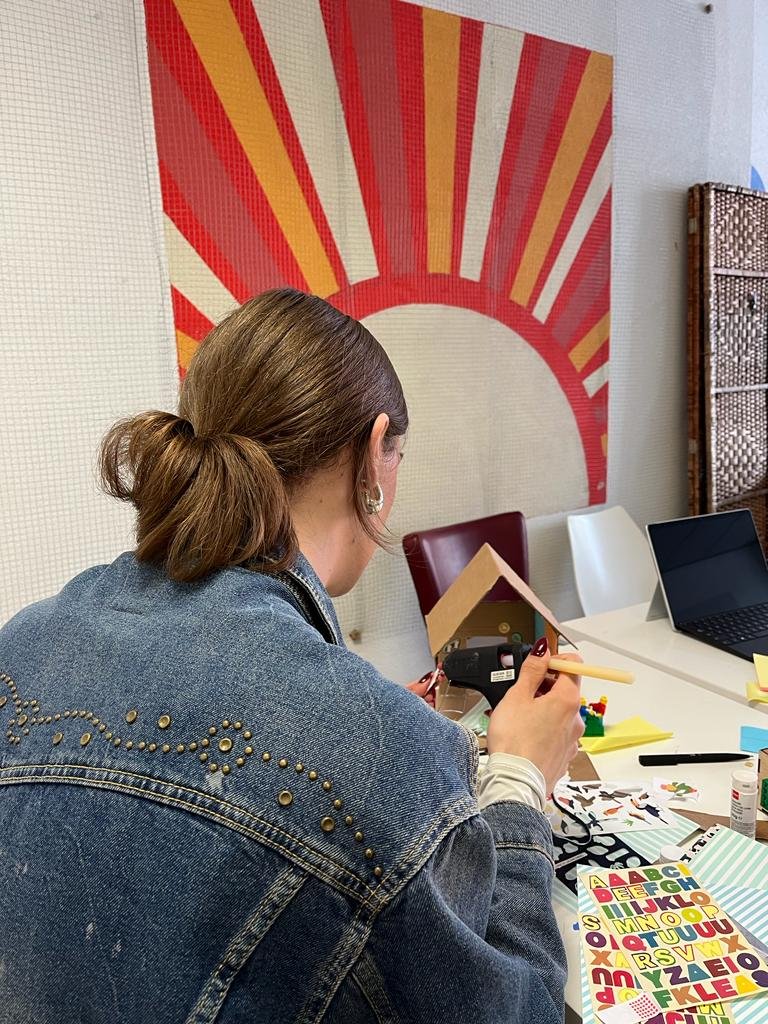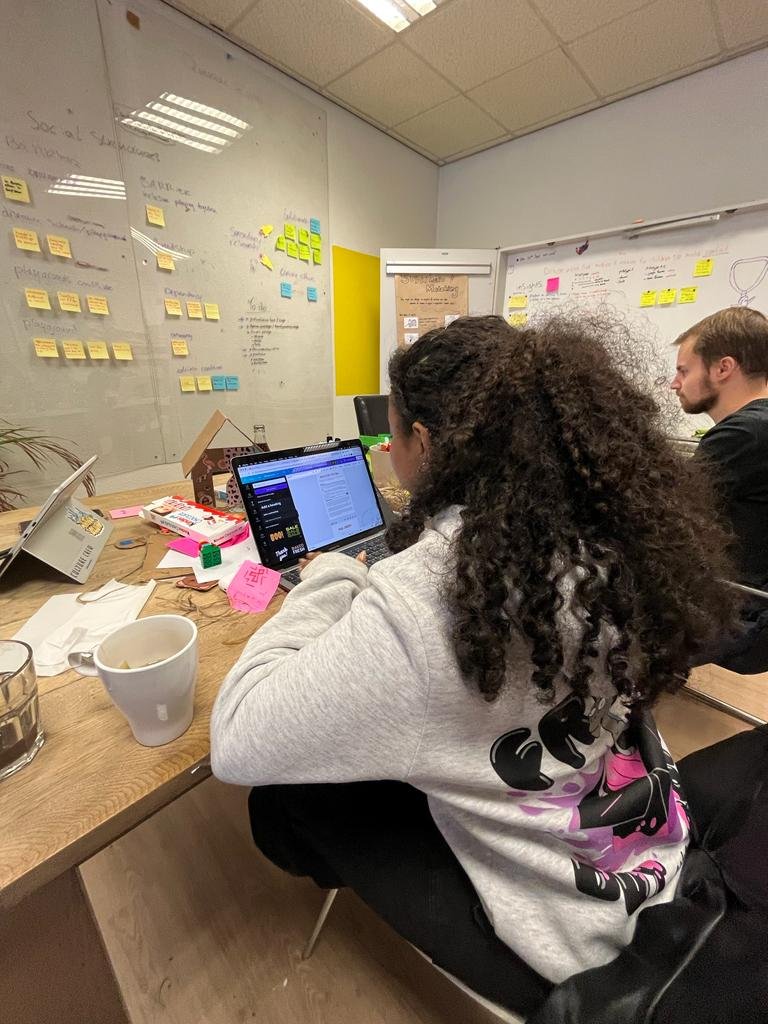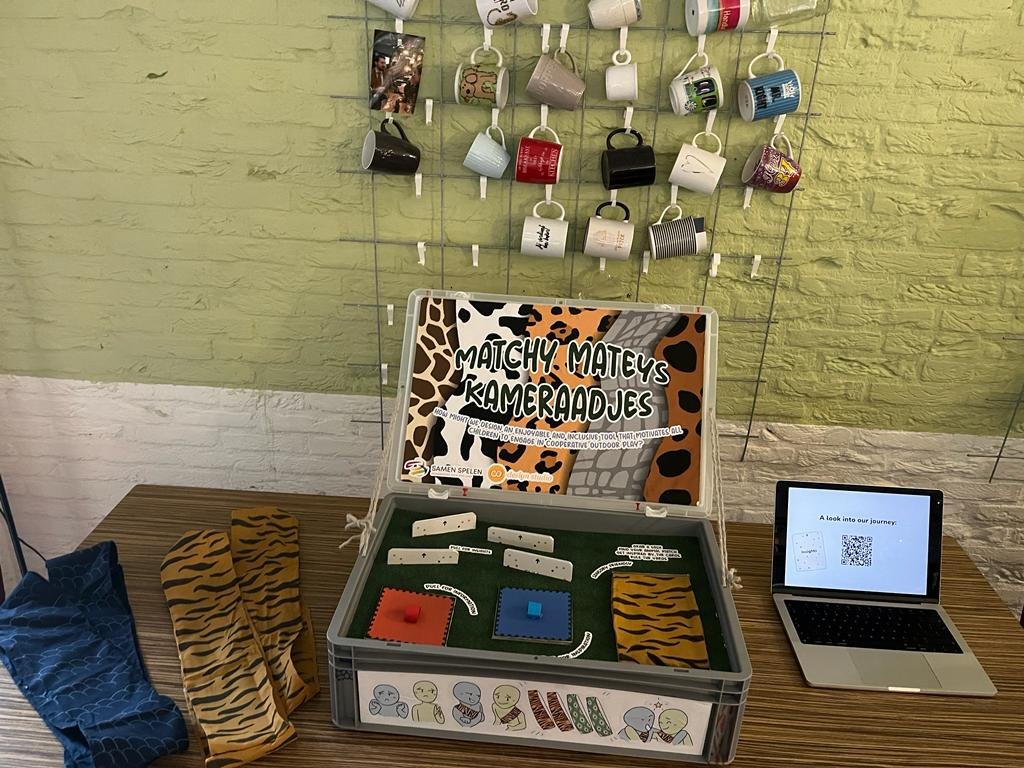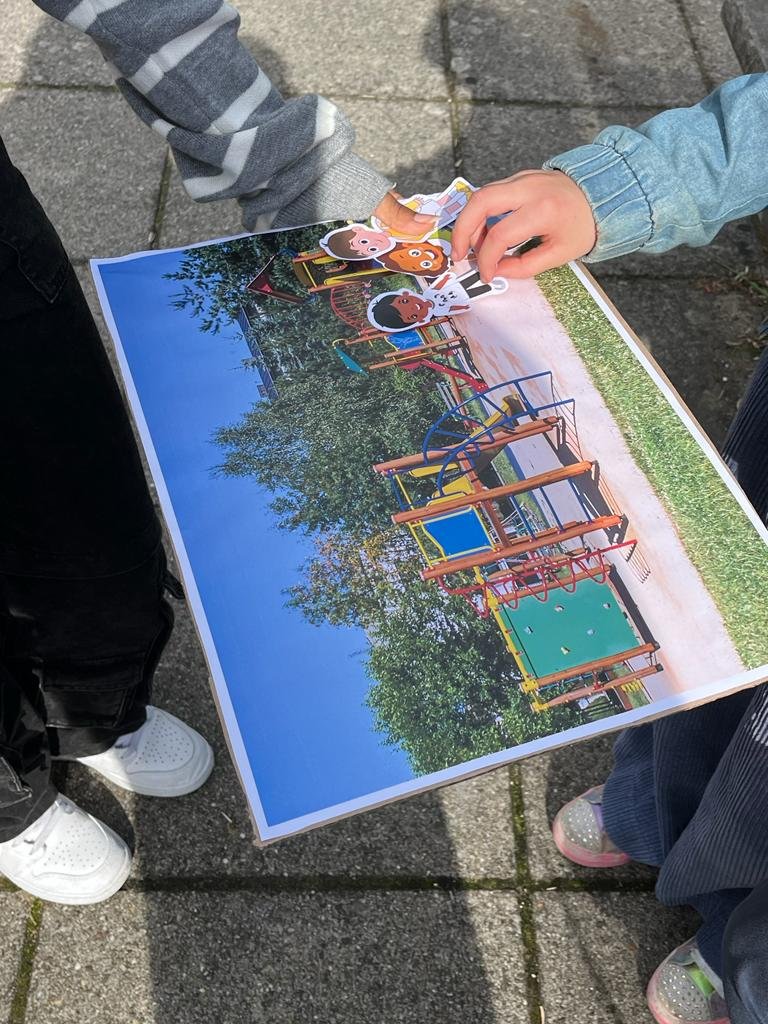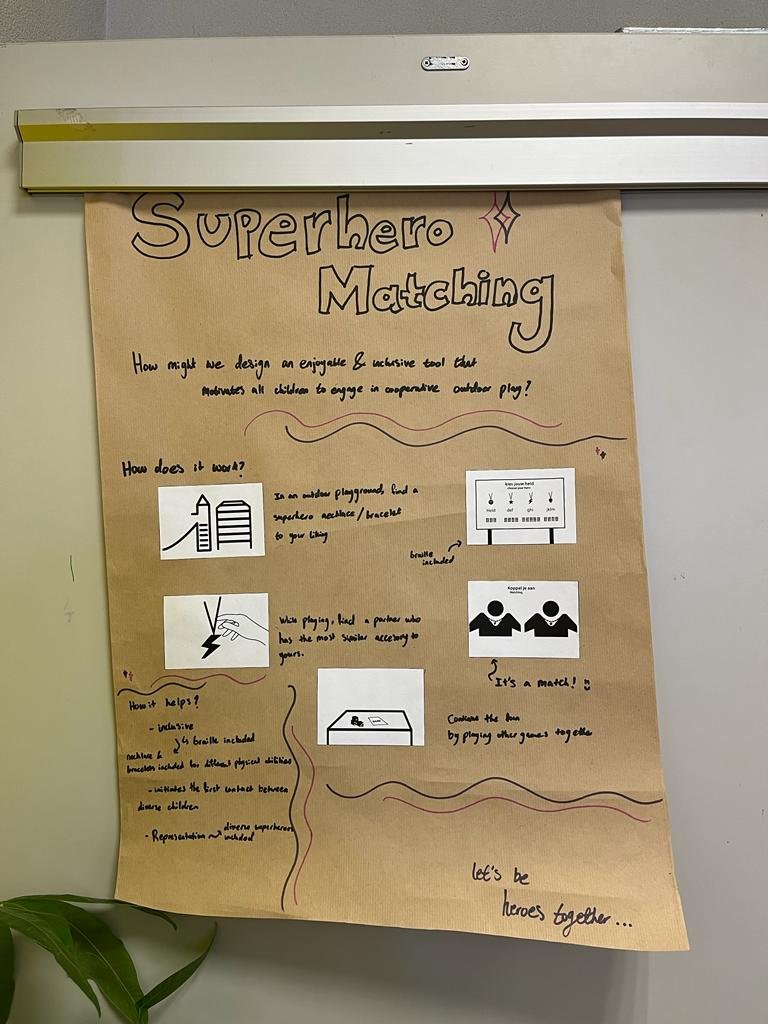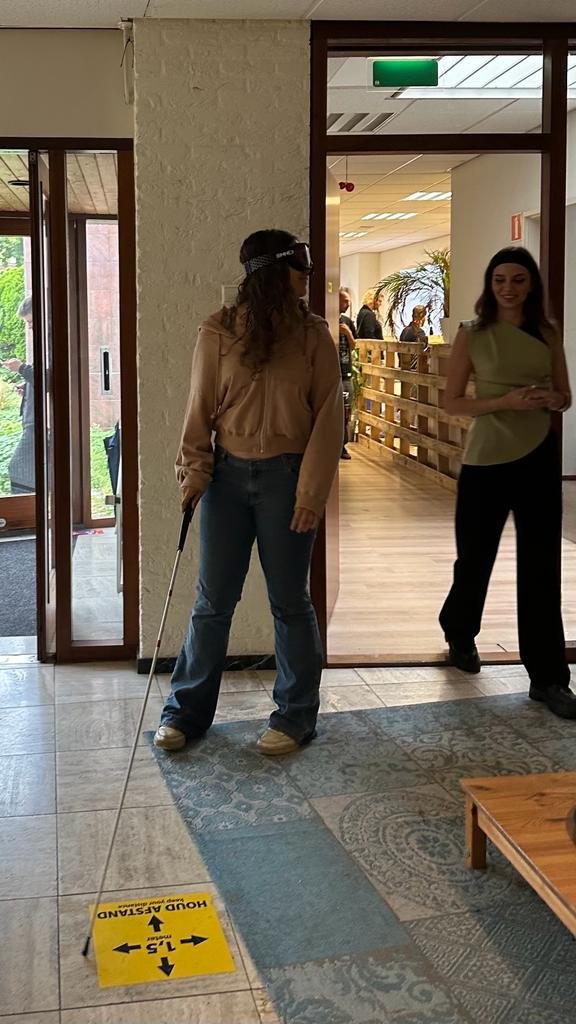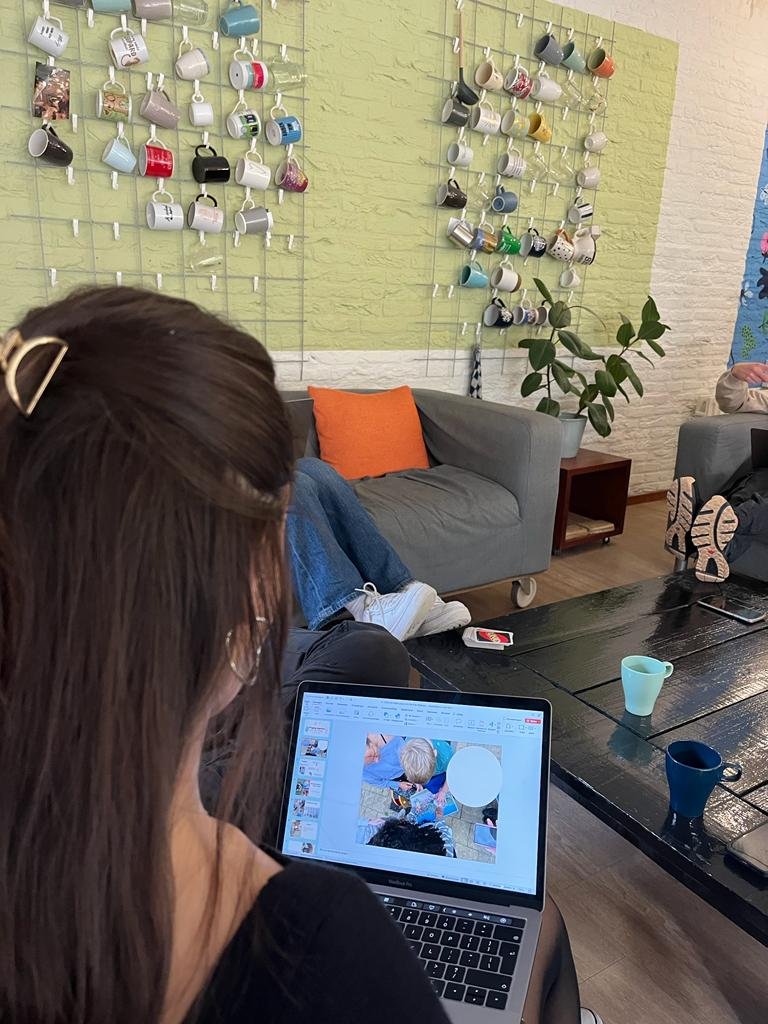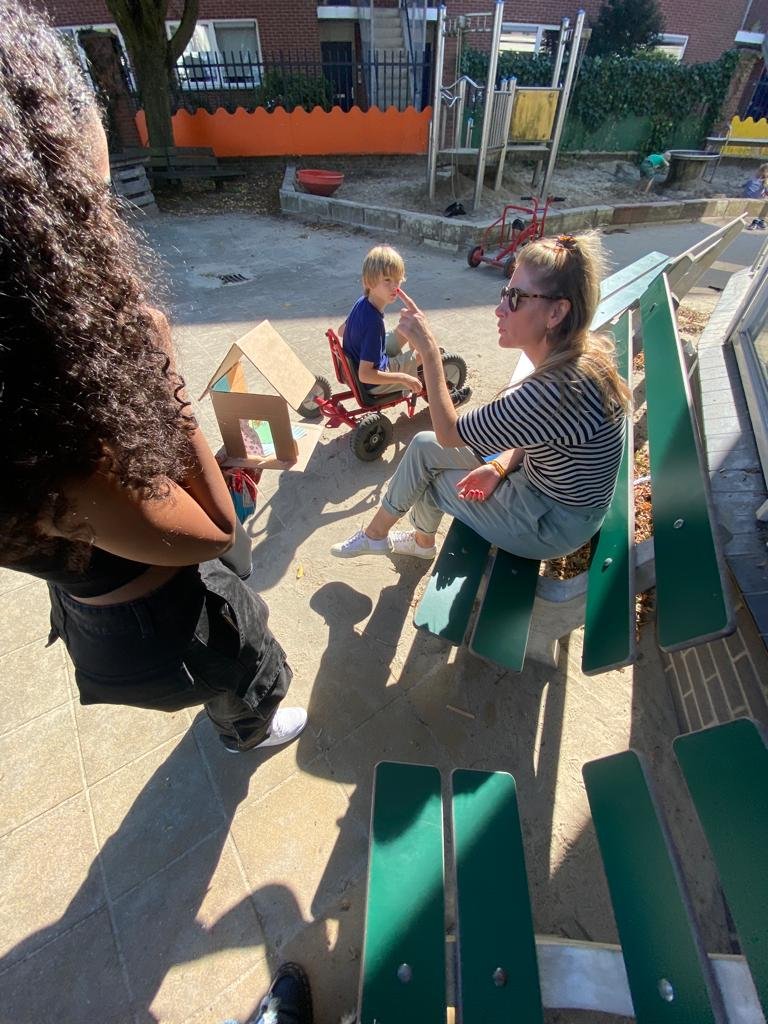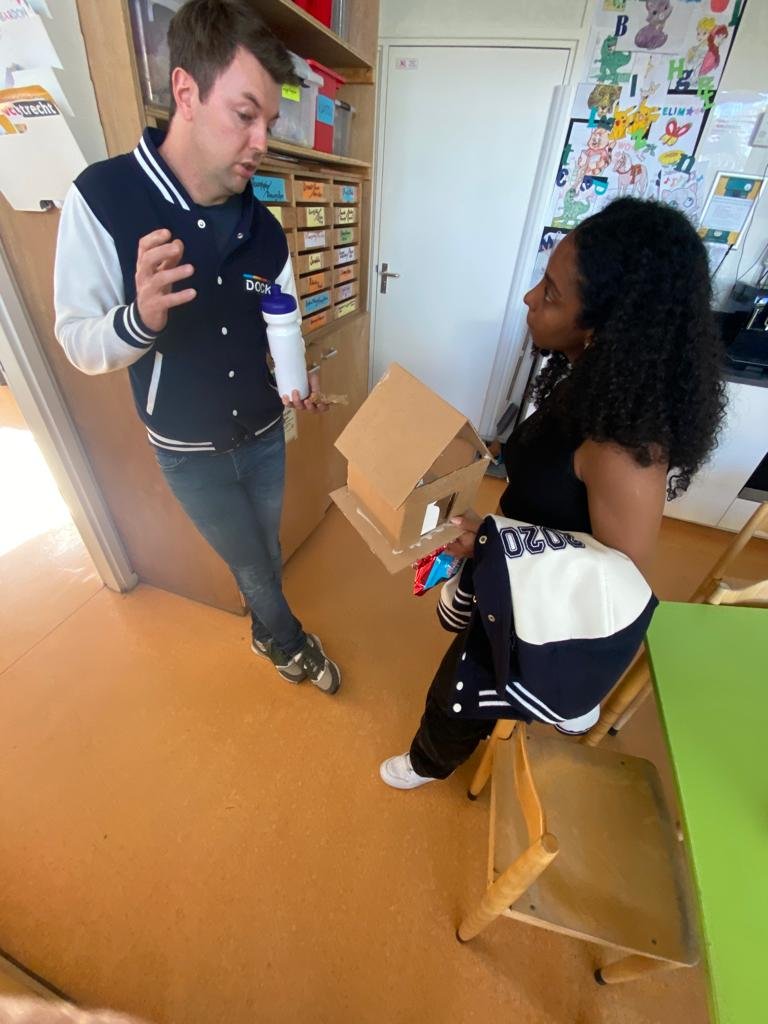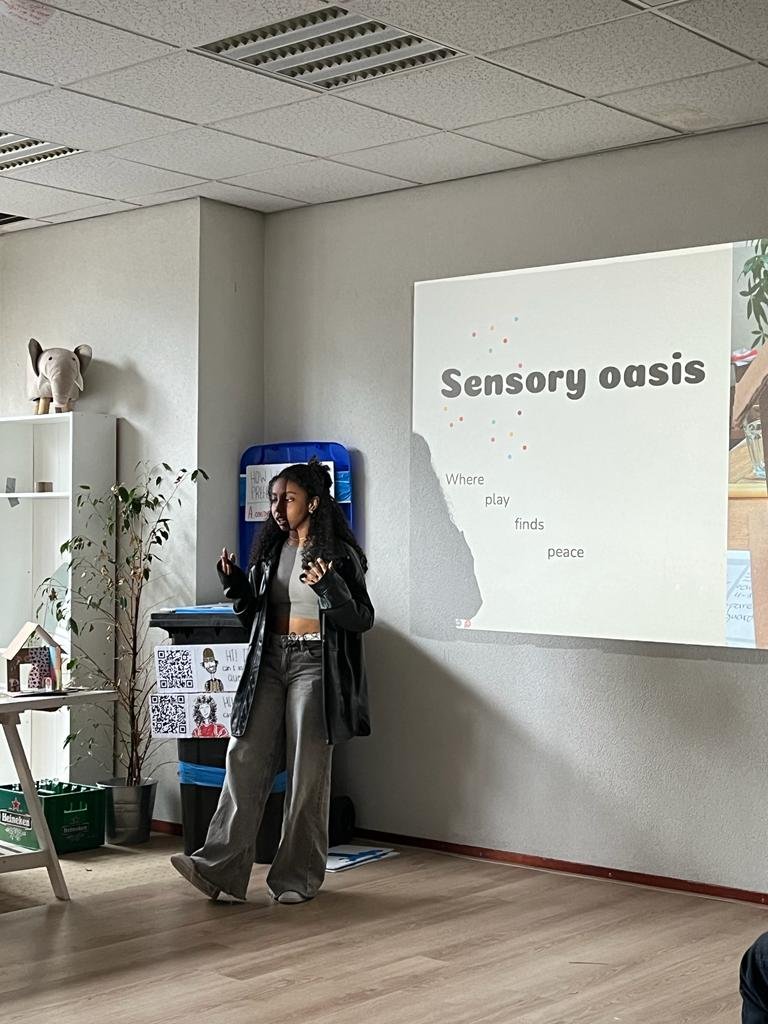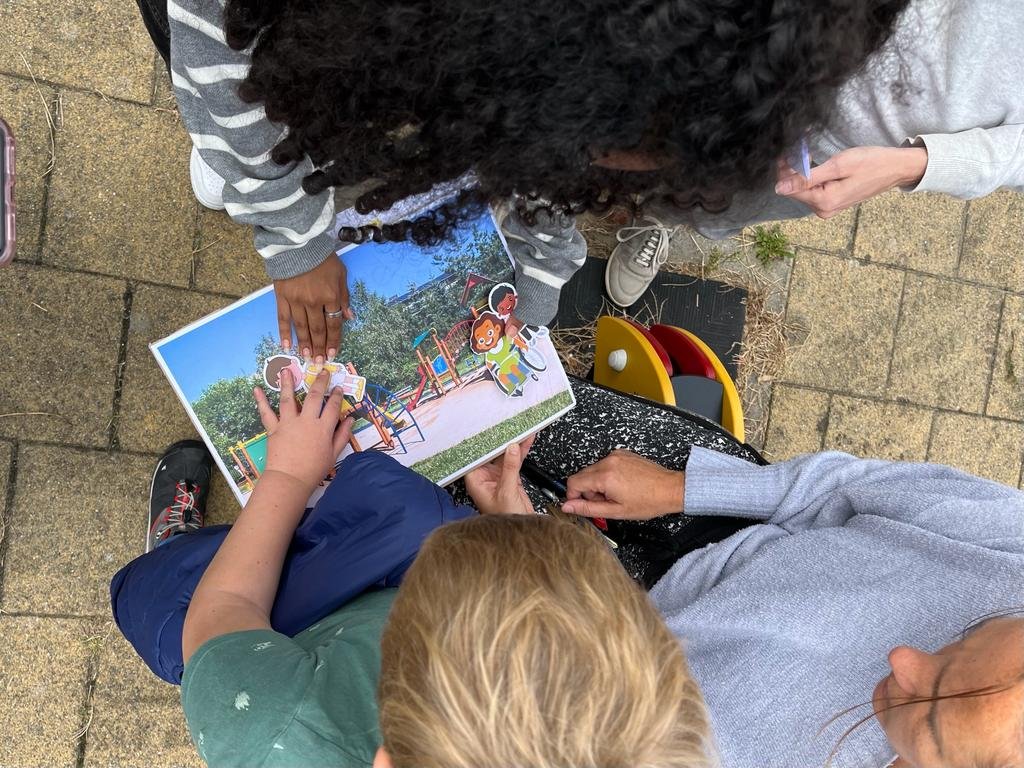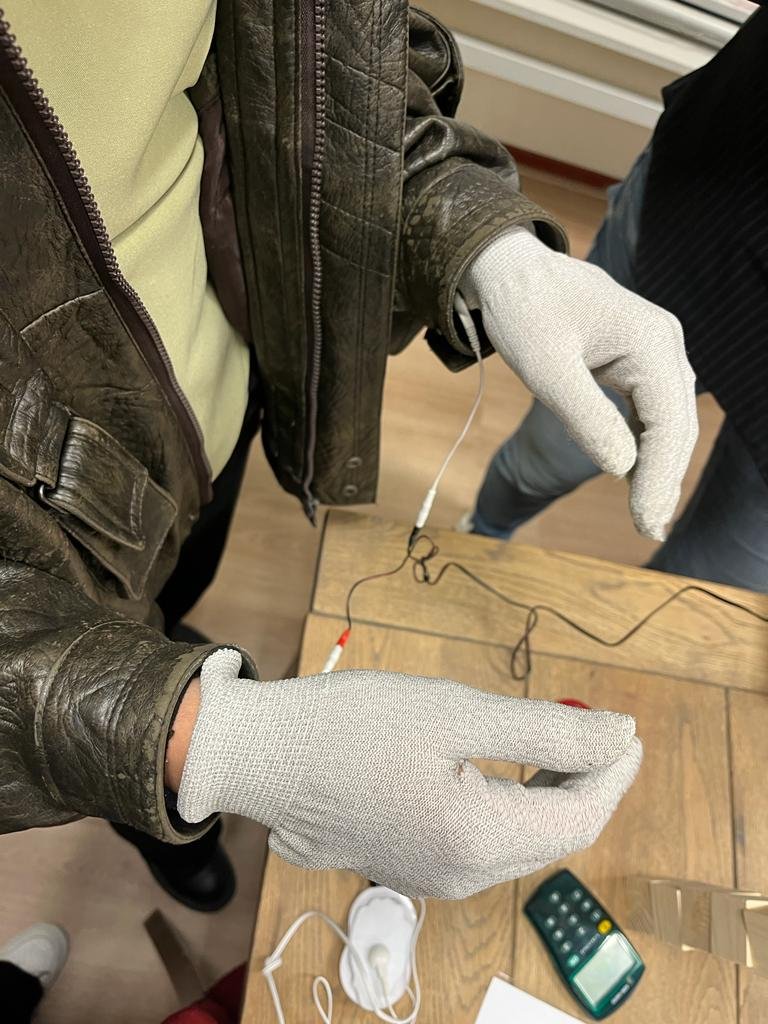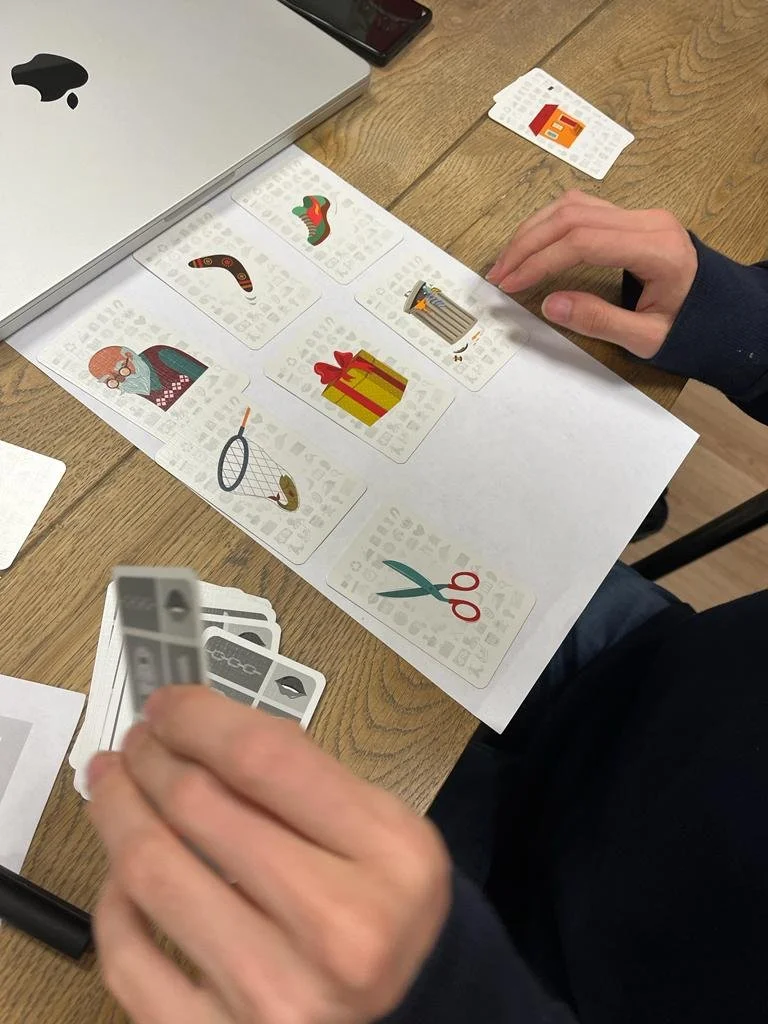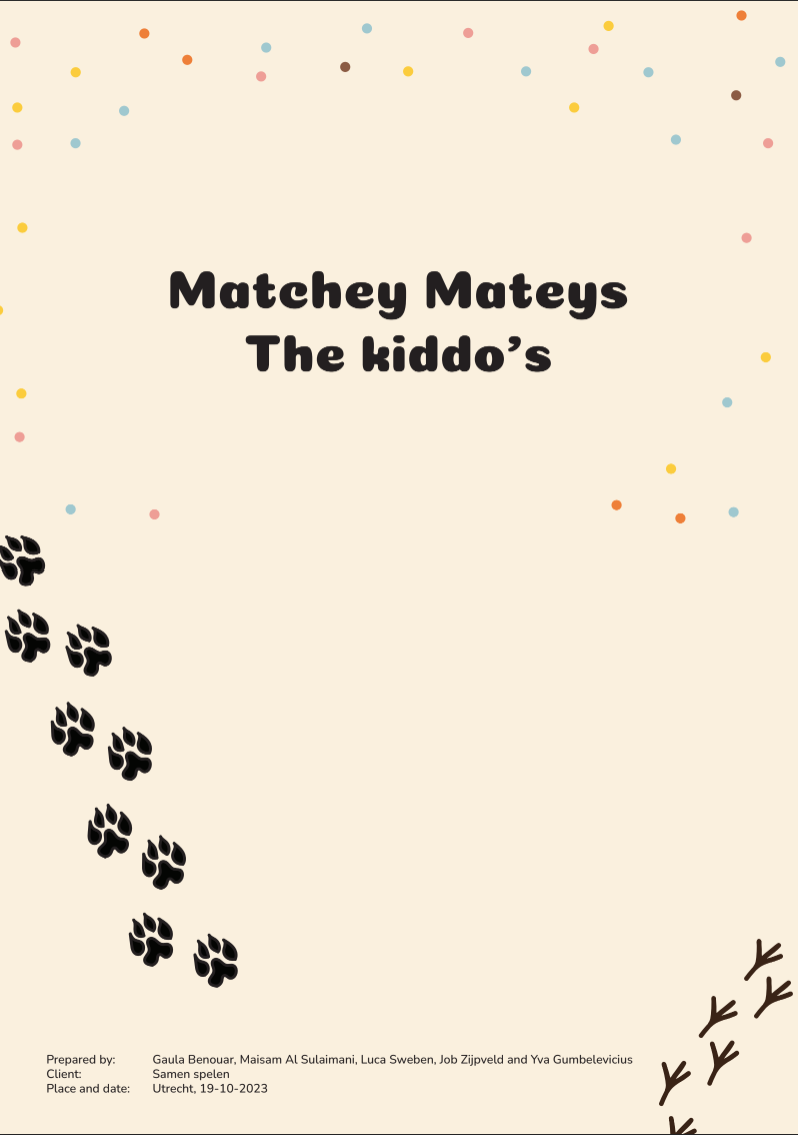Samen Spelen
For project one, with our client being Samen Spelen, I realized the importance of inclusive design while working on the challenge: “How can we design an enjoyable and inclusive tool that motivates children, aged 4-12, to participate in cooperative outdoor play?”
Impact & Change
Playing to my strengths
Discovering my role within the co-design team has been an evolving journey. Initially, I grappled with the idea of fitting myself into a predefined category, thinking everyone had distinct roles. However, during this project, I realized I didn't have to confine myself to a single category. Instead, I found strength in versatility. I seamlessly stepped in when needed, offering structure to our ideas and guiding the flow of the group. This encompassed various responsibilities such as being the contact person, conducting interviews, managing the group dynamics, handling documentation, and engaging in the pitching process. Embracing this multifaceted approach allowed me to play to my strengths and contribute to the team's success.
Design Methods Mastered
Crazy 8 & Brainstorm
Utilizing the "crazy eight" method to generate creative ideas proved to be both initially daunting and ultimately enjoyable. The process, though sounding stressful initially, transformed into a challenging yet enjoyable experience, allowing our minds the freedom to express the first thoughts that surfaced. Additionally, incorporating brainstorm cards added an extra layer to our design process. These cards enabled us to think of additional, fun elements to incorporate into the game, filling in any gaps and enhancing the overall design.
Prototyping & Testing
In the course of our project, the iterative refinement of prototypes stood out as a crucial aspect. I gained a profound understanding of the importance of testing with the target group and incorporating their feedback. This iterative process wasn't just about creating a better product but also about tailoring it to their specific needs and providing enhanced value. Witnessing our target group not only grasp our ideas but actively contribute suggestions for improvement during prototype presentations led to the success of the final toolkit produced.
Personal Development
Empathizing
Exploring ways to connect with the children and encourage them to share their stories became a major learning point for me during the empathizing phase of this project. Witnessing the impact of a simple tool, in the form of a board featuring a playground, was intriguing. It revealed how this uncomplicated approach facilitated the children in opening up about their typical habits and activities in the playground.
Working Smart
Embracing a "work smart, not hard" mindset became evident, especially within the demanding timeframe of the program. This project highlighted the importance of taking breaks and knowing when to call it a day. This practice proved instrumental in fostering new and innovative ideas the following morning. Another pivotal realization occurred during this project—my inability to speak Dutch became a hindrance. Working with teammates and receiving research documents in Dutch, coupled with the challenge of communicating with children, prompted me to start the journey of learning the language. While the program primarily operates in English, recognizing the potential benefits, I began to comprehend the additional possibilities that learning Dutch could unlock.
Final Pitch .
Final Pitch .
To view the document illustrating the journey towards the toolkit, click on the image above.

